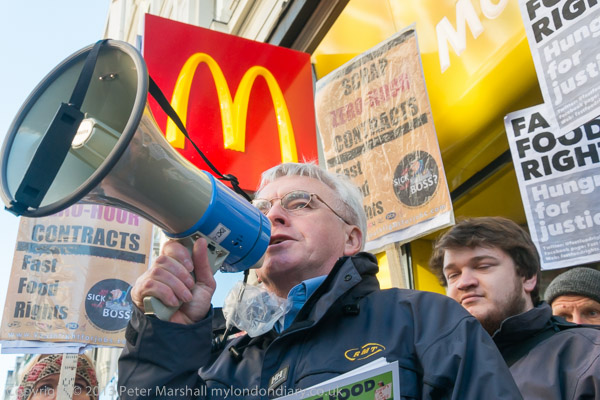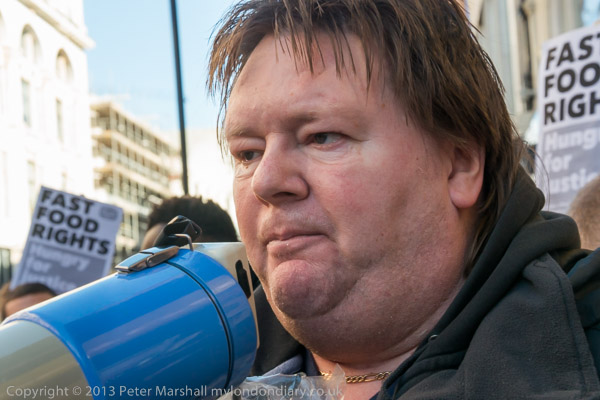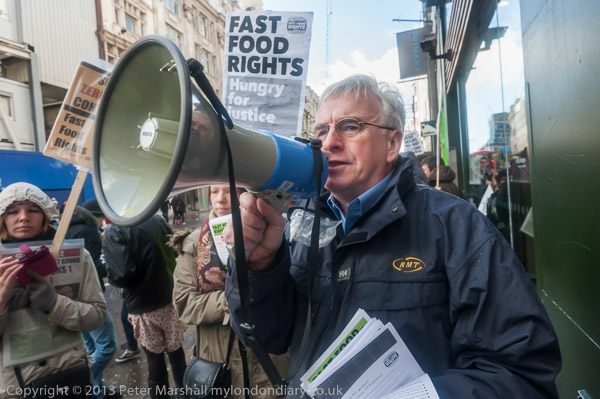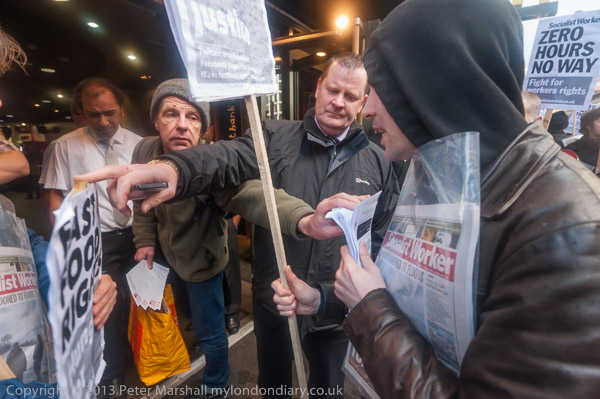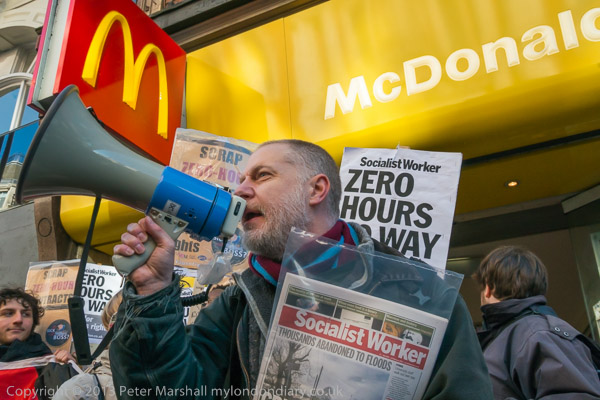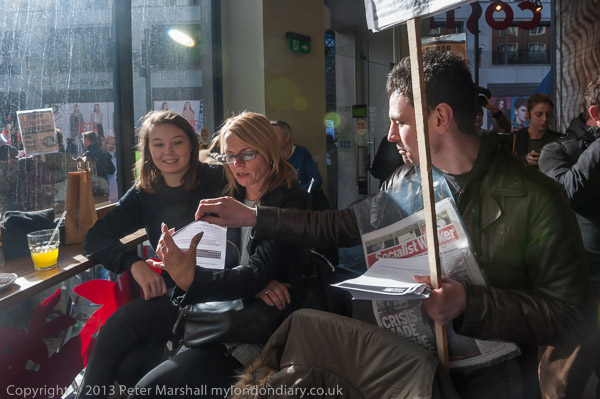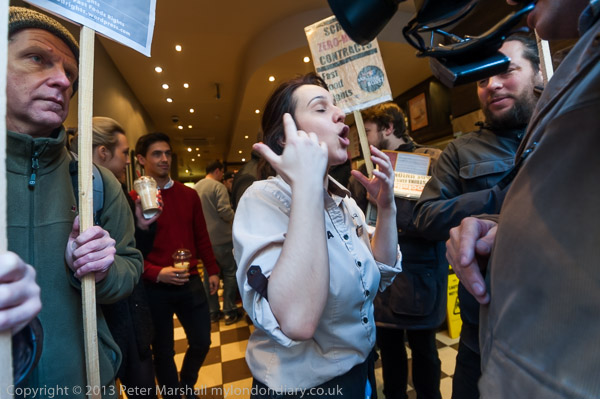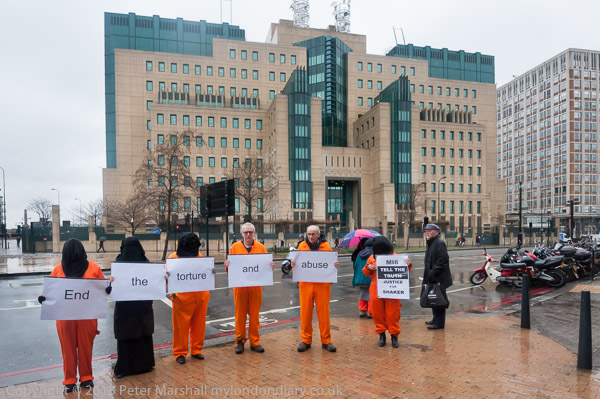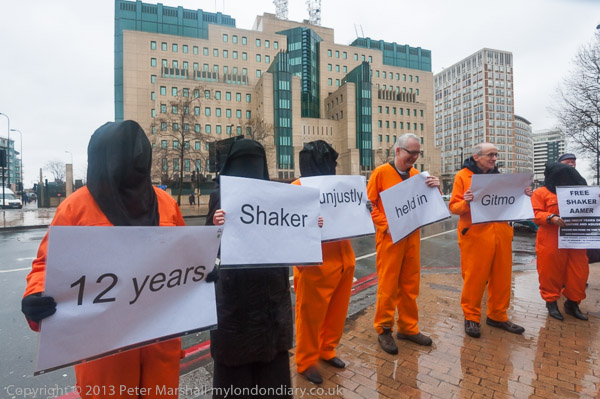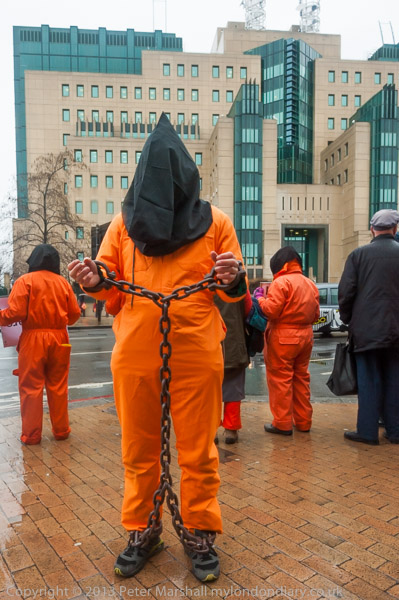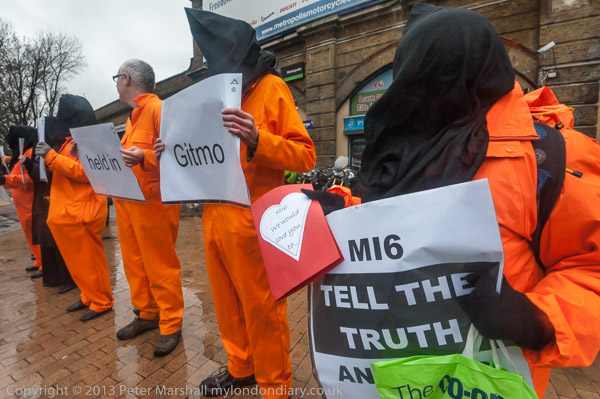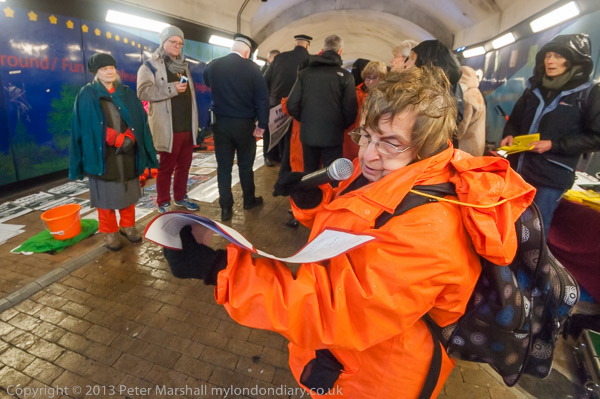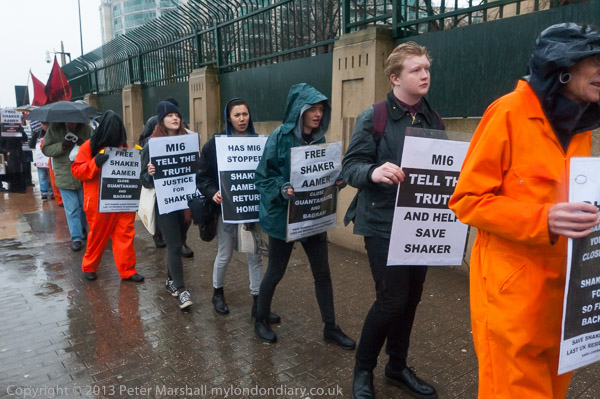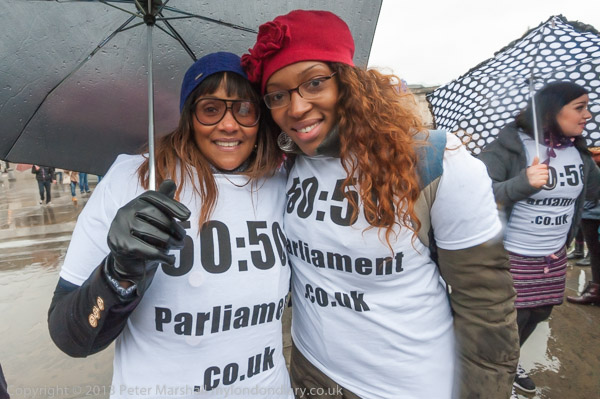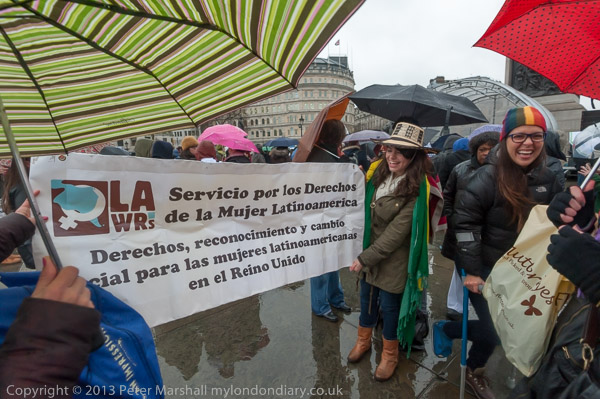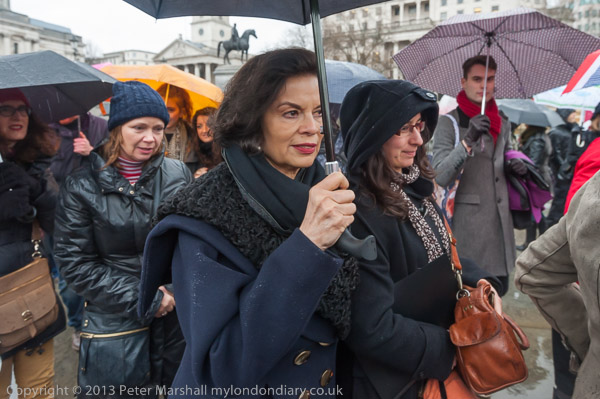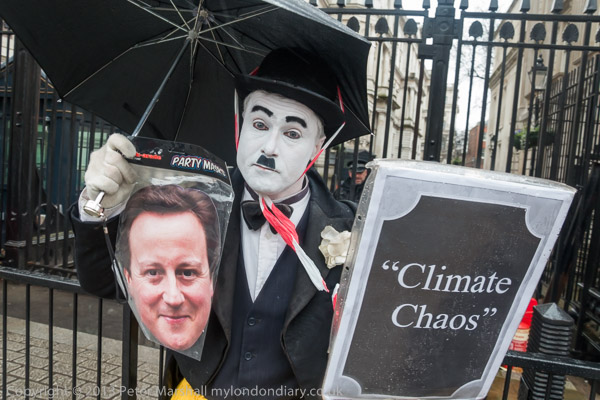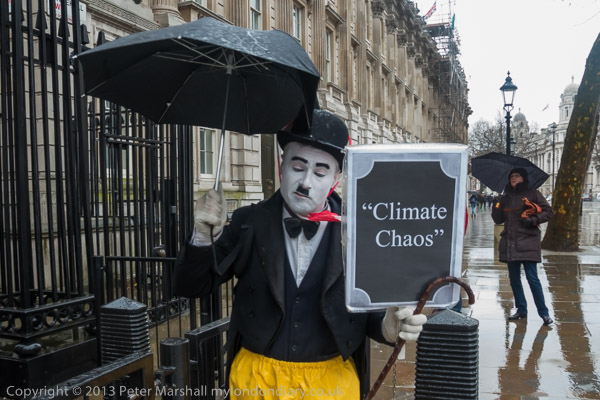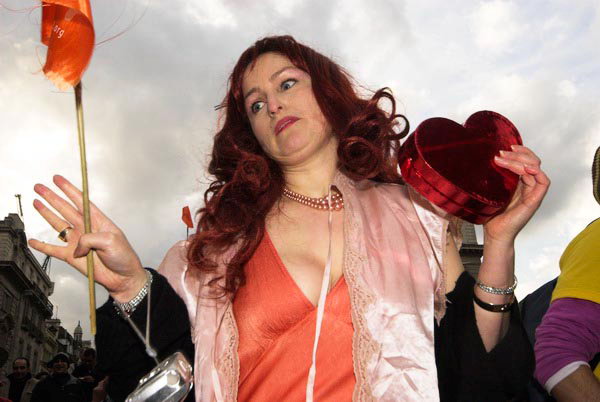
Dancing at Reclaim Love, 2006
I was very pleased to get a message on Facebook on the Friday evening that contrary to expectations there was going to be another Reclaim Love Valentine’s party at Piccadilly Circus the following afternoon.
I should have heard about it a week or so earlier, when messages began to be posted on the Reclaim Love Facebook group, but Facebook is now terribly broken. What used to be a good way of keeping in touch with people now systematically hides most of the messages and updates that your ‘friends’ post (and most of yours from most of your friends) unless you pay to have them promoted – as well as sending you stuff from people you have no connection with who have paid for the distribution.
Facebook has commercialised the ideas of friendship and community, and it was probably inevitable it should do so. I suspect too that it would now be impossible because of copyrights and other intellectual property rights for an open-source competitor to set up a competing service that really worked, as has happened in some other areas of computing such as Linux or Firefox web browser.
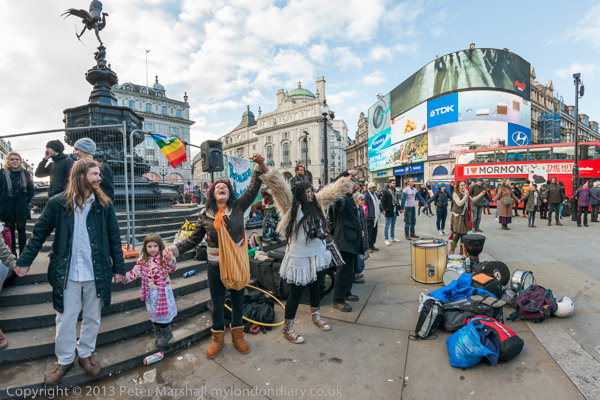
Joining hands at Picadilly Circus for the ‘Celebratory-Collective-Consciousness-Shifting-Love-Circle’
I mention this because Reclaim Love was also set up to oppose commercial degradation, in this case of love into the massive industry of exploitation which reaches its annual peak at St Valentine’s day.
It was started from the inspiration of Irish poet and Love activist, Venus CuMara (quoted in Resurgence in 2010) to “create a balance for all those like me who are disenchanted by the idea that chocolate and flowers could be a greater gift than the gift of love itself” and she persuaded others to join with her in creating a free festival in 2003.
I missed this first event as I was in hospital waiting for an operation, was in Paris for Valentines Day 2004, but was present the next year in Piccadilly Circus, where the party took place around the statue of Eros. (Which of course isn’t Eros, but we all call it that.) And since then I’ve not missed a year – and there are pictures every February on My London Diary – links to them all here in Reclaim Love 10th Anniversary.)
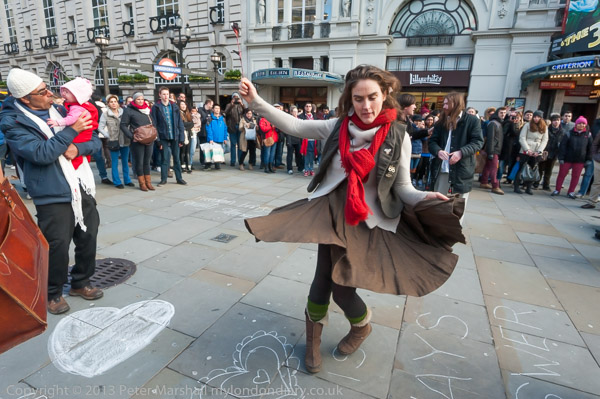
Venus dancing at Reclaim Love, 2014
For Venus, it was also “an experiment to see if we can create a shift in the collective consciousness of our people. If this experiment works we will shift from the common, fear based way of thinking, to a more fearless-generous-sharing-Love-centred way of thinking. In order to do this we need enough people,( a critical mass ) to focus on the same thing at the same time World Wide.” And at 3.30 pm GMT at various places around the world people joined hands in what she called a Celebratory-Collective-Consciousness-Shifting-Love-Circle and recited together as a mantra her translation of an old Sanscrit prayer:
“MAY ALL THE BEINGS IN ALL THE WORLDS BE HAPPY AND AT PEACE”.
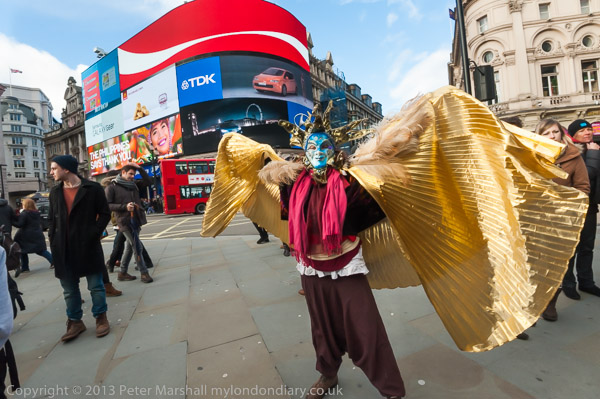
And it really was free, and taking place without any notice or permission to the city authorities or police, just taking over this small area of the streets of London for a party, with music, dancing, giving away free t-shirts and sharing food. And although it might not have a great influence on world peace, it has created a little magic in an otherwise rather dreary area of tourist London for a few hours every year.
Last year was Venus’s 10th Reclaim Love (one year she was out of the country and passed the organisation to others) and she had decided it would be her last. But as the time of year came close, friends of hers who had taken part in the event decided it had to happen again, and rushed around inviting people bands and poets to come and perform. Venus herself came back from Ireland to come. Perhaps because of the last minute nature (and the perfidy of Facebook) there were fewer people than in previous years, though I’m told that word got around on Twitter during the event and things got rather livelier after I’d left around two hours after it started as the light was fading.
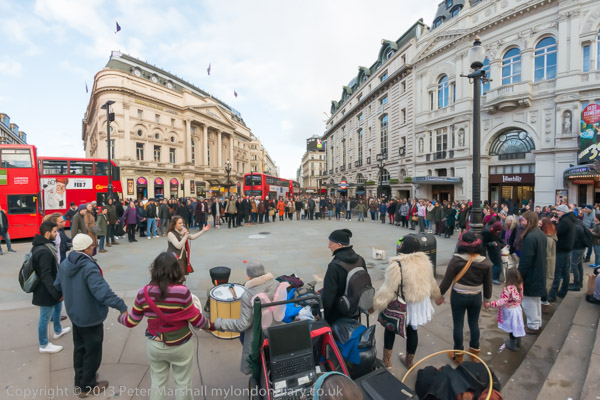
I think I’ve taken better pictures in previous years, though there are some that work quite well. The circle with people holding hands is perhaps difficult to photograph with everyone spread out around the area. The picture taken from the steps around Eros to gain a little height gives some idea of the scene, but doesn’t work as well as those from inside the circle.
Both this and the second picture from the top were taken with the Nikon 16mm full-frame fisheye, a lens I’m really enjoying using, mainly on the D700. It works well on the D800E too which I used for these, but the files really get too huge as to use the Fisheye-Hemi converter I output them as 16 bit Tiff files – which with the 32Mp sensor gives around 200Mb file size. As high quality jpegs they are a rather more manageable 9 or 10 Mb, and at 7360 x 4912 pixels would serve if I ever needed to print at high quality at 300 dpi around 2 foot wide. Of course they could actually be blown up much larger as the files are sharp and detailed. And they would certainly look fine on those illuminated billboards at Piccadilly Circus.
